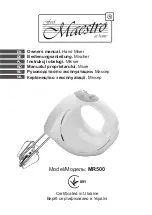
Since a VU meter is a linear and not a logarithmic meter, the scale becomes
very cramped at the lower end of the scale. The range of indication is extended by
providing each Main Cassette with two locking push buttons. One of these
increases the gain of both VU meter amplifiers by 10dB, and the other increases the
gain by 20dB.
The inputs of the VU meter amplifiers are connected to a selector switch
whereby they may be connected to the follow/replay key for measuring record and
replay levels, to the inputs to the particular Main Cassette, to the selector switches
in the Group, Control Room Monitor or Studio Playback Cassettes for measurement
of levels in these cassettes, to an external socket for measurement of levels in other
equipment, or to the –10dBV oscillator line. If a mixer has more than one Main
Cassette, the cableform is wired so that only the first Main Cassette (i.e. Tracks 1 &
2) can be used for measurements in the Control Room Monitor and Studio Playback
cassettes and this Main Cassette is also connected for measurements in the left
hand Group Cassette. The second Main Cassette is used for measurements in the
second Group Cassette. All VU meters can be switched simultaneously if desired, to
the test oscillator so that their sensitivities and frequency response may be checked.
There are also meters associated with the Compressor/Limiters and the
correlator, the indications of which will be dealt with later.
2.4.6 Switching
Stud or keyswitches are used for signal switching where these can be used
without excessive complication of the switch or wiring.
Where multiple and/or remote switching is required, it is then effected by
using transistors as switches. In this way the use of electro-mechanical relays,
which tend to be large, heavy and power consuming, has been avoided in the signal
circuits.
Transistor switching is used in the following circuits:
The solo facility described in 3.6, whereby the signal in any one microphone
channel may be heard on the left hand control room monitor loudspeaker, the right
hand speaker being simultaneously muted, without interfering with the recording.
The track announce circuitry described in 5.2.7 and 5.2.8, which provides a
separate button for each track and a further button for announcements on all tracks
simultaneously.
The operator and artist manager talkback circuitry described in 8.3.
2.4.7 Frequency response
In previous generations of mixers, each channel has included several
transformers which have provided appreciable attenuation at frequencies above and
below the audio band. This is advantageous since it is undesirable that unwanted
frequencies should be indicated on the programme meters, or recorded on the
master tape. As the present mixer only has two transformers per channel and as
these have wide pass bands, particularly in the bass, each channel in each cassette
is provided with a Band Pass Filter, which is described in 12.7.












































